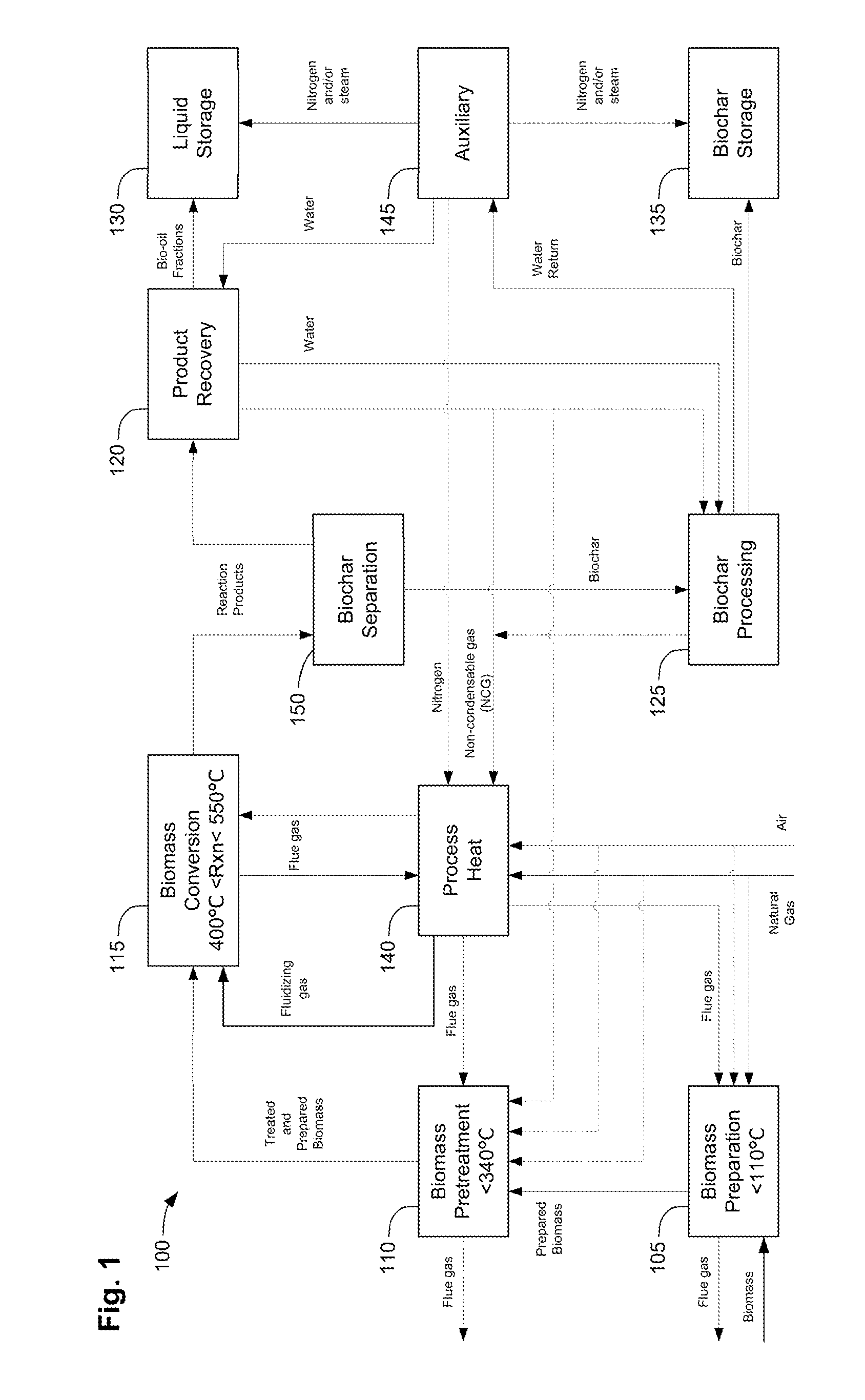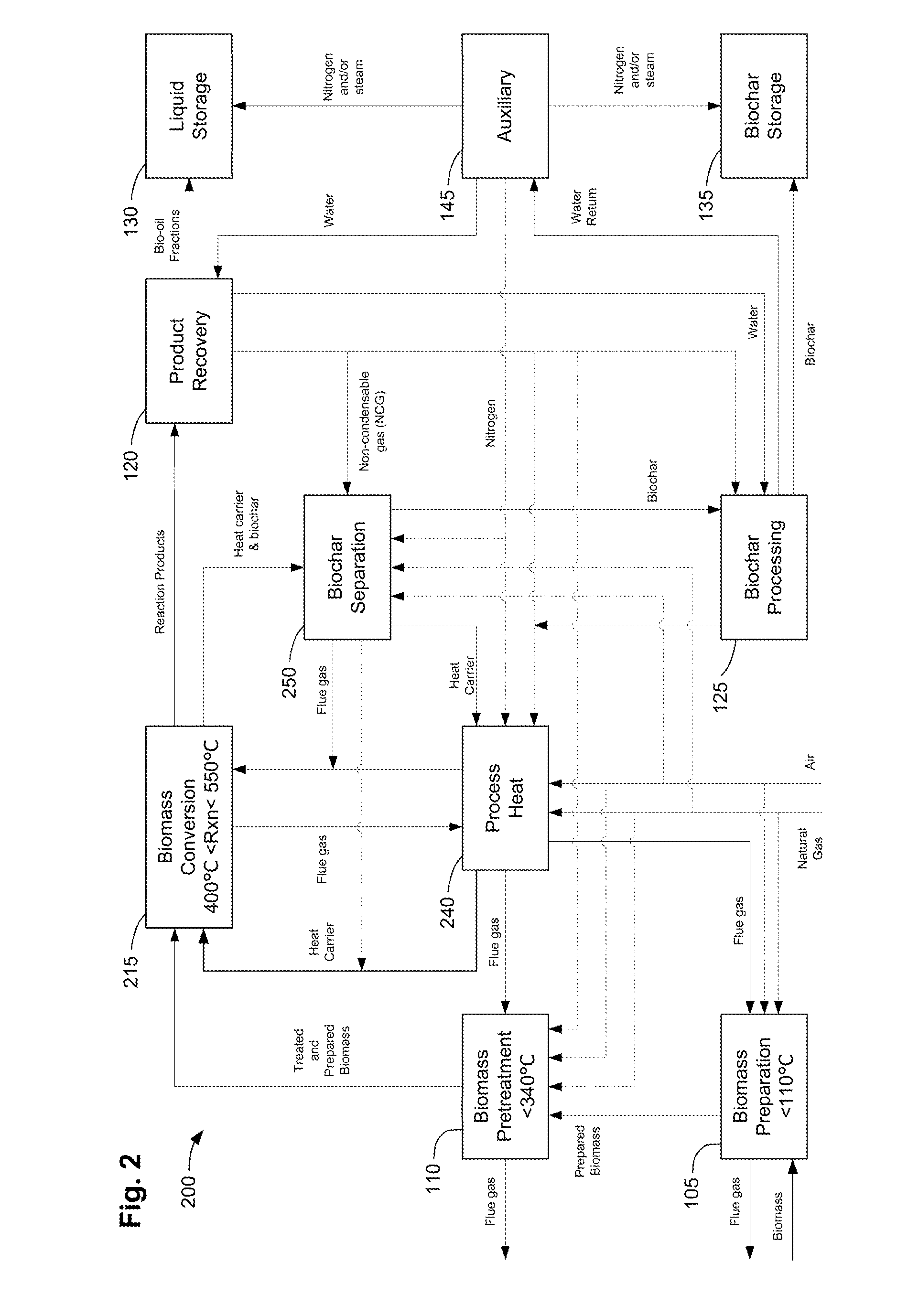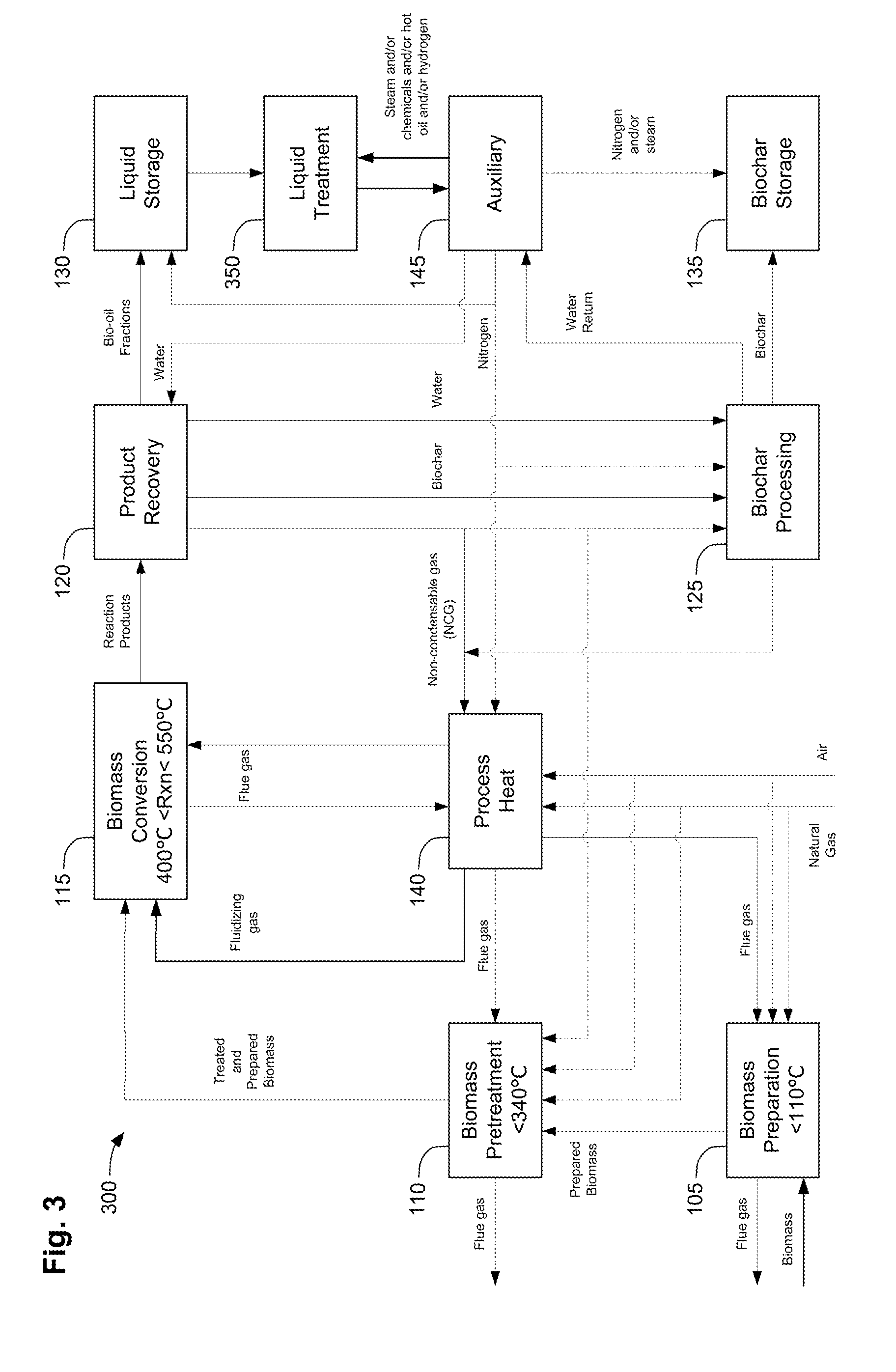Methods for integrated fast pyrolysis processing of biomass
a biomass and pyrolysis technology, applied in the field of integrated process methods, can solve the problems of limited demonstration history, large capital-intensive facilities, and high cost of biochemical conversion of biomass, and achieve the effect of increasing collection efficiency
- Summary
- Abstract
- Description
- Claims
- Application Information
AI Technical Summary
Benefits of technology
Problems solved by technology
Method used
Image
Examples
example
Pilot-Scale Integrated Fast Pyrolysis Process
[0163]By way of example, the integrated biomass fast pyrolysis and fractionation process was demonstrated using a pilot scale system located at the BioCentury Research Farm in Boone County, Iowa. Red oak biomass was received in bulk bags on a transport trailer. The bulk bags were unloaded from the trailer and placed in storage. The biomass arrived having 8 wt % moisture and was roughly chipped to 2.5 cm minus.
[0164]The chipped biomass was not dried any further since it arrived with less than 10 wt % moisture. The biomass was milled in a hammer mill to 3.2 mm minus using a 3.2 mm screen size. The biomass was not pretreated in unit 110, rather, it was transported directly to the receiving hopper in unit 115.
[0165]A bucket elevator in unit 115 conveyed biomass from the receiving hopper to a surge hopper. The surge hopper was purged with nitrogen to remove oxygen. A feeder below the surge hopper metered biomass into a bubbling fluid bed react...
PUM
| Property | Measurement | Unit |
|---|---|---|
| particle size | aaaaa | aaaaa |
| temperature | aaaaa | aaaaa |
| length | aaaaa | aaaaa |
Abstract
Description
Claims
Application Information
 Login to View More
Login to View More - R&D
- Intellectual Property
- Life Sciences
- Materials
- Tech Scout
- Unparalleled Data Quality
- Higher Quality Content
- 60% Fewer Hallucinations
Browse by: Latest US Patents, China's latest patents, Technical Efficacy Thesaurus, Application Domain, Technology Topic, Popular Technical Reports.
© 2025 PatSnap. All rights reserved.Legal|Privacy policy|Modern Slavery Act Transparency Statement|Sitemap|About US| Contact US: help@patsnap.com



